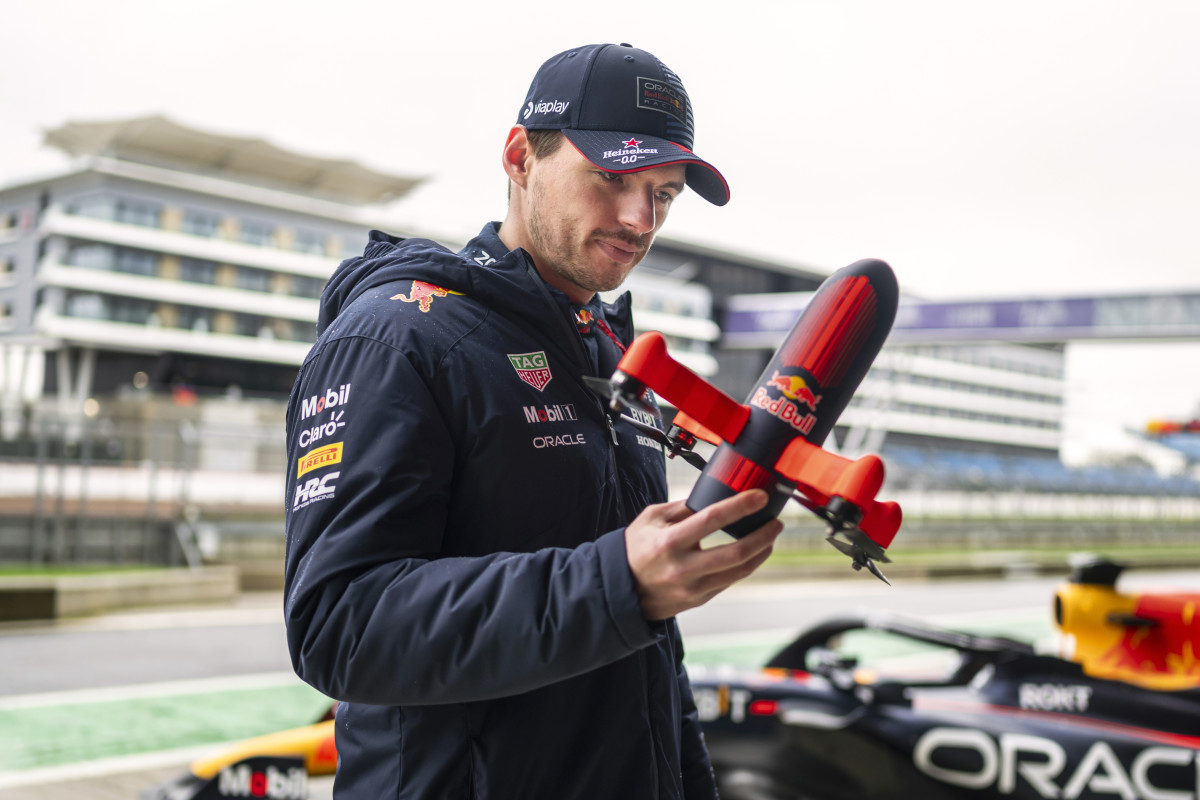
F1 Interested In Red Bull's 220MPH Drone For Filming During Races
Red Bull showcased incredible footage from a high-speed drone during a filming day, sparking F1's interest in potentially using the technology for race week coverage. However, there are significant challenges to overcome before implementation.
Key takeaways:
- Red Bull's 220mph 'Drone 1' captured impressive footage at Silverstone
- F1 has held talks with Red Bull and FIA about using drones at races
- Safety concerns and restrictions around crowds pose major hurdles
Formula 1 has expressed keen interest in Red Bull's cutting-edge 'Drone 1' technology, which captured jaw-dropping footage of Max Verstappen's car during a recent filming day at Silverstone ahead of the season start. The futuristic drone, capable of hitting F1 speeds up to 220mph, was developed by Red Bull's Advanced Technologies division in collaboration with the Dutch Drone Gods company.
The spectacular overhead shots, tracking Verstappen's RB19 and RB20 for an entire lap, represent a significant leap forward from the limited drone footage previously seen in F1. However, as F1's director of Media and Broadcast, Dean Locke, explains, numerous challenges must be addressed before such technology could be widely implemented during grand prix weekends.
"It is really interesting what they have done with it," Locke acknowledged as quoted by Autosport. "But it was a private test, and they don't have to adhere to 90% of the rules that we have to."
While discussions have taken place between F1, Red Bull, and the FIA to explore the drone's potential applications, Locke highlighted critical safety concerns that could hinder its use, especially in the presence of spectator crowds.
"It is really quick, but you can't fly over a crowd, and you can't cross the track. Plus it doesn't have a moving head, so it's actually got to follow the car or be to the side. So it's actually quite tricky."
Locke highlighted that safety remains the utmost priority when considering the integration of drones at F1 events, where crowds can exceed 400,000 over a race weekend.
"The drone has been amazing for some sports but, for us, it's still very challenging. The speed of cars are still ridiculously fast and we have these events where we're getting over 400,000 people turning up over a weekend. So not flying over crowds is actually quite difficult now."
He continued:
“We are also doing some work not only speed of drones, but just how light can we go? Can we go incredibly small? So if it does drop, it's doing very, very little damage opposed to the companies that always approach us with these huge things.”
Despite the obstacles, Locke suggested that certain track areas without spectators, such as the back straights in China and Austin, could potentially accommodate the Red Bull drone.
"There are places, like the backstraight in China, and the backstraight in Austin, there are a couple of areas where we plan to talk to them about it," he added.
Ralph Hogenbirk, the drone pilot known as Shaggy FPV, expressed uncertainty about the next steps but reiterated the technology's potential for live race coverage.
"We have no idea where we're actually going to go from here. But of course the goal is to have some livestream capabilities in an actual race or free practice or whatever. To combine this with a Formula 1 circuit in some kind of way. Because it's specifically built to do that."
